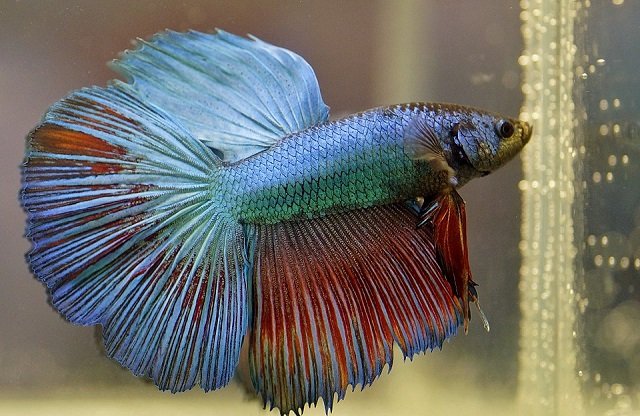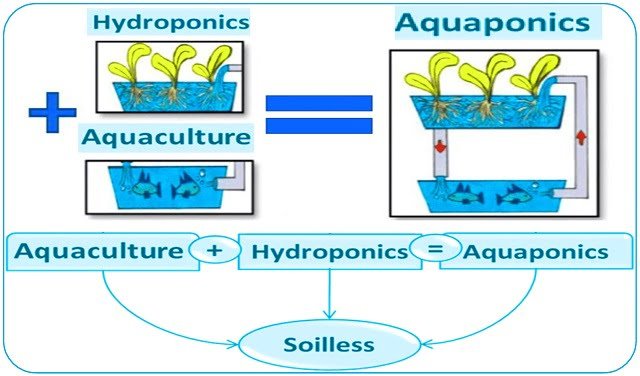
The aquaculture industry faces significant challenges, mainly related to the accumulation of nitrogenous waste, such as ammonia and nitrite, which can be harmful to fish health and the environment. Conventional waste management methods, such as frequent water changes, are resource-intensive and unsustainable.
Recirculating aquaculture systems (RAS) offer a sustainable alternative to traditional aquaculture by minimizing water usage and environmental impact. However, effective water filtration remains a critical challenge.
A team of researchers from Jomo Kenyatta University of Agriculture and Technology and Nagasaki University investigated the efficiency of a new biofiltration system, the Downflow Hanging Sponge and Upflow Sludge Blanket System (DHS-USB), to address effluent management challenges in an RAS. By mimicking natural biogeochemical processes, the DHS-USB system aimed to improve water quality and promote sustainable aquaculture practices.
Background
RAS technology revolves around recycling water within a controlled environment. This minimizes water consumption and enables precise management of water quality parameters. However, the accumulation of waste products such as ammonia poses a major threat to fish health.
Traditional filtration methods in RAS often involve complex and maintenance-intensive systems. DHS technology, inspired by trickling filters, uses sponges to provide a large surface area for microbial growth and organic matter degradation. In contrast, USB technology employs a granular sludge bed for the anaerobic breakdown of organic pollutants.
The DHS-USB Bioreactor: A Novel Approach
Integrating DHS and USB technologies into a single bioreactor offers a promising solution. By combining aerobic and anaerobic processes, this system aims to effectively convert harmful ammonia into harmless nitrogen gas. This dual-process approach has the potential to significantly enhance water quality, improve fish health, and optimize feed conversion rates.
System Design and Operation
The experimental setup included a fish tank, water pumps, and an underground tank for storing filtered water. The core of the system was the DHS-USB unit, designed to facilitate nitrification (conversion of ammonia to nitrite and then nitrate) and denitrification (reduction of nitrate to nitrogen gas).
Performance Assessment
Fish growth parameters, including body weight gain (BWG), specific growth rate (SGR), and feed conversion ratio (FCR), were monitored biweekly to assess the system’s impact on fish health. Water quality parameters such as dissolved oxygen (DO), temperature, pH, turbidity, and electrical conductivity (EC) were monitored daily to ensure optimal growth conditions. Additionally, concentrations of total ammonia nitrogen (TAN), nitrites, and nitrates were analyzed using a UV-VIS spectrophotometer to evaluate the system’s effectiveness in nitrogen waste removal.
Stay Always Informed
Join our communities to instantly receive the most important news, reports, and analysis from the aquaculture industry.
Key Findings
The main findings of the study on the DHS-USB bioreactor in recirculating aquaculture systems (RAS) are as follows:
- Pollutant Reduction: The DHS-USB system demonstrated remarkable efficiency in reducing water pollutants. Reductions of 34.68% in total ammonia nitrogen (TAN), 17.54% in total inorganic carbon (TIC), and 43.71% in total suspended solids (TSS) were observed. These reductions highlight the system’s ability to improve water quality compared to a pumice aquaponic system. The DHS-USB system outperformed the pumice aquaponic system in TAN and TSS removal.
- Fish Growth Performance: Fish cultured in the DHS-USB system exhibited superior growth performance compared to the pumice aquaponic system. The specific growth rate (SGR) was 1.98, and the feed conversion ratio (FCR) was 2.22. These results indicate that the DHS-USB system provides a more conducive environment for fish growth and development.
- Bacterial Density: Bacterial density was highest in the DHS filter system (3.54 ± 0.27 ⨯ 10⁵ CFU/mL), indicating high microbial activity essential for organic matter degradation and nutrient cycling. Bacterial density was lower in the fish tank (2.40 ± 0.16 ⨯ 10⁵ CFU/mL).
In summary, the study demonstrated that the DHS-USB bioreactor effectively reduces nitrogenous waste, improves water quality, promotes fish growth, and provides a suitable environment for beneficial bacterial communities, making it a promising option for sustainable aquaculture.
Implications for Sustainable Aquaculture
The combined DHS-USB bioreactor system has shown promising results in enhancing nitrogen removal in closed-loop aquaculture systems. By leveraging aerobic and anaerobic processes, this system significantly reduces toxic ammonia and nitrite levels, promoting stable water quality. Improved water conditions reduce fish stress, enhance feed conversion rates, and encourage better growth rates, making it essential for RAS success.
Conclusion
This research provides valuable insights into the feasibility and efficiency of the DHS-USB bioreactor for aquaculture waste management. The findings can inform the development of more sustainable and efficient water recycling systems, minimizing environmental impact and enhancing aquaculture productivity.
Additionally, the study provides critical data on microbial community dynamics within the bioreactor, contributing to our understanding of bioremediation processes and their applications in environmental biotechnology.
Reference (open access)
Obondo, C. O., Kagali, R. N., Njogu, P. M., & Kamau, J. N. (2025). Nitrogenous waste removal in closed freshwater recirculating aquaculture systems using an innovative DHS-USB bioreactor. Journal of Agriculture and Food Research, 19, 101577. https://doi.org/10.1016/j.jafr.2024.101577
Editor at the digital magazine AquaHoy. He holds a degree in Aquaculture Biology from the National University of Santa (UNS) and a Master’s degree in Science and Innovation Management from the Polytechnic University of Valencia, with postgraduate diplomas in Business Innovation and Innovation Management. He possesses extensive experience in the aquaculture and fisheries sector, having led the Fisheries Innovation Unit of the National Program for Innovation in Fisheries and Aquaculture (PNIPA). He has served as a senior consultant in technology watch, an innovation project formulator and advisor, and a lecturer at UNS. He is a member of the Peruvian College of Biologists and was recognized by the World Aquaculture Society (WAS) in 2016 for his contribution to aquaculture.




